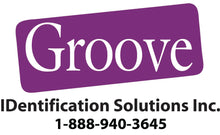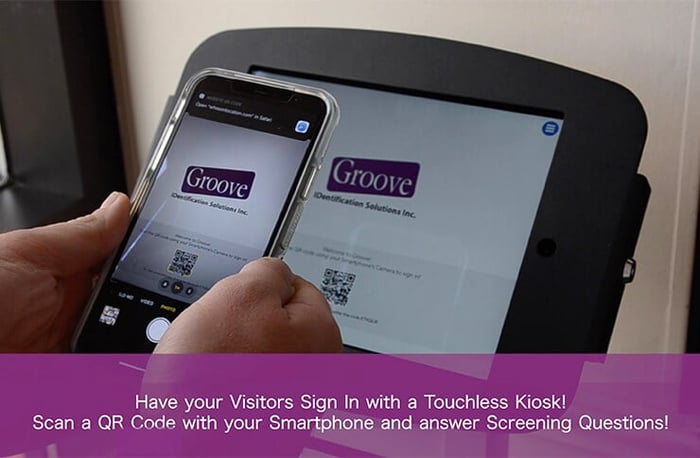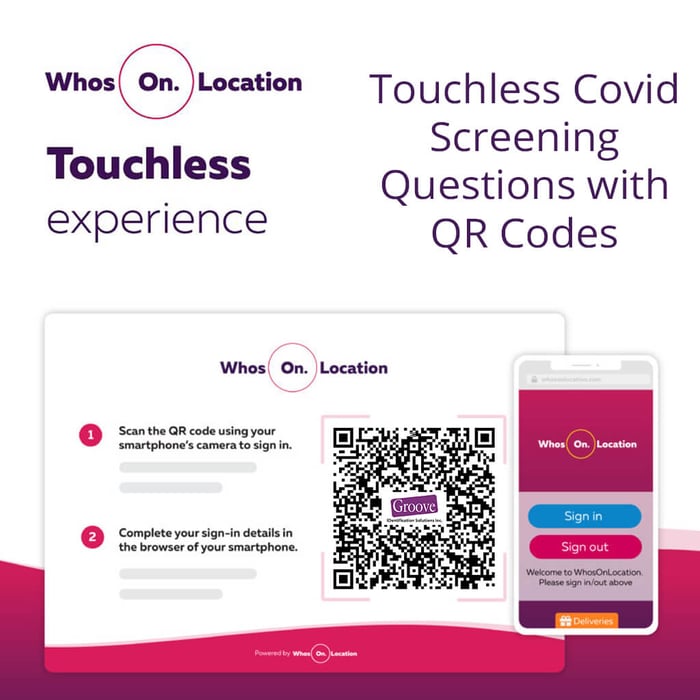Touchless Visitor Kiosks Improve Hygiene and Team Deployment
The pandemic is causing a resource crunch for a lot of facilities teams. Sites are asking some staff to work from home. Often, circumstances have forced supervisors to limit the number of staff onsite to maintain social distancing. Organizations are looking for ways to do more with less in every onsite function, and security is no exception.
One task that companies can’t do without, especially with covid, is access management for employees, visitors and service providers. More than ever, it has to be safe, secure and professional. Yet, staffing entry points may not be feasible these days with those scarce online resources.
Besides, asking a staff member to handle reception may be challenging or even unhealthy. Social distancing isn’t always feasible or practical to set up in some spaces.

Click Here To Learn More About WhosOnLocation!
As with so many challenges these days, the solution is automation. It’s like the virtual meetings and online collaboration tools to which we’ve all finally adapted to. The technology to manage the way your facility processes visitors to the site is already available. All it takes is deployment.
Sign In and Out Without Ever Touching a Surface
Not only can you use digital devices to manage the registration process, but you can also even set up the entry experience to be completely touchless. Your staff and visitors can sign in and out without ever touching a surface at all.
Groove Identification offers a range of affordable visitor kiosks that are easy to install at your facility. Today’s kiosks use a computer tablet like the Apple iPad or the Microsoft Surface housed in a durable, secure enclosure. The enclosures can be mounted on a pedestal to create a floor stand or a counter-top stand to install them on a raised surface like a shelf or desk.
If you already have a visitor kiosk, then the process is even more straightforward. All you have to do is adjust your WhosOnLocation software to function in touchless mode. Going touchless will allow visitors to sign in and out using their smartphones instead of using the kiosk’s touch screen.
If you’ve ventured out to dinner lately, you may have run across virtual menus that guests access using QR codes. QR codes are those more modern square-shaped bar codes. The QR stands for Quick Response. When you take a picture of the QR code with your smartphone, the restaurant’s menu appears on your phone screen, and you don’t have to handle a printed menu.

When your visitor kiosk is running in touchless mode, it does something very similar. The person approaches the kiosk and sees the QR code with instructions. They take a picture of the QR code, and then the sign-in application loads in their phone’s browser.
They’ll use the phone app to either sign in or sign out. You can have visitors enter their name, organization and any other personal information our facility collects as part of the registration process. The registration all happens on the touchscreen of their own phone. They don’t have to touch anything in your access area.
Depending on the business you’re in and the rules in your jurisdiction, you’ll probably want to add some pandemic screening questions as well. You can create your own customized questions based entirely on your local procedures and protocols. For example, you can ask if they have any flu-like symptoms or if they’ve travelled outside the country in the last two weeks. Many facilities ask if visitors have been in contact with someone diagnosed with covid recently. What your organization chooses to ask is up to you. The system adapts to your rules. The visitor’s answers to the questions you ask will trigger the appropriate pre-set responses. In most cases, where there are no issues with the responses, the kiosk can unlock the door.
If one or more of the answers is a red-flag, the kiosk can send email notifications to one or more of your staff. Designated staff can then report to the access point, for example.
They can interview the visitor to get the follow-up information they need to grant or deny access. Security staff can receive these notifications as emails at their desks. They can also get texts on their smartphones if they’re on their feet for much of their shift.
Once the person’s access is approved, the kiosk can display an announcement, a reminder or an acknowledgement. You might want to remind them to keep their mask on at all times. Or you could remind them to keep two metres apart, or to wash their hands, or all of the above.
Suppose you have sensitive information on your site or meetings that involve sharing trade secrets or other confidential material. In that case, you can also include a non-disclosure agreement (NDA). You can insert your organization’s standard form agreement. The visitor signs it with their fingertip on their phone’s touch screen.
Necessity Is the Mother of Invention
Necessity is the mother of invention. Like so many tools people are trying out these days, the technology for touchless visitor kiosks has been available for some time. You can view the pandemic as an opportunity to utilize your staff resources better and improve workplace health and safety at the same time with a touchless visitor kiosk.
Our staff would be happy to work with you to choose the best visitor kiosk model for your site. We can also help you make a smooth transition to touchless visitor management.
If you’re planning a new touchless visitor kiosk or have one in place, we’d love to hear about your access management experiences or answer any questions you may have.




